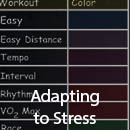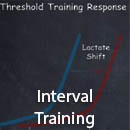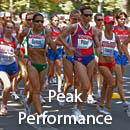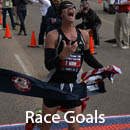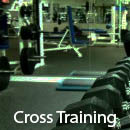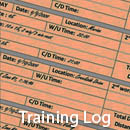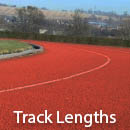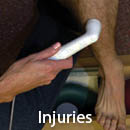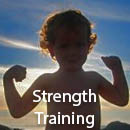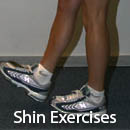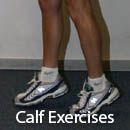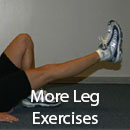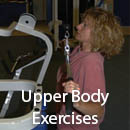Race Walking Training
Proper Race Walking Shoes
Offering advice on selecting proper shoes for race walking presents a daunting task. By the time this book hits the printed page, any shoe mentioned could already be discontinued. Add to this problem the variations in individual needs and body types, and the task becomes even harder. So, instead of making recommendations about specific models, below I present general guidelines to use for selecting the best shoes.
Don’t Be a Slave to Fashion
Buy shoes for quality only. Do not pick shoes because they look cool or coordinate well with an outfit or uniform. If you look at the NB 110s below, you might wonder whether New Balance made the shoes ugly on purpose, so only serious athletes would wear them.
Don’t Wear Race Walking Shoes to the Mall
Anyone belonging to a race walking newsgroup knows that at least twice a month, the topic of finding the perfect walking shoe surfaces. Like the Holy Grail, perfect shoes are hard to find. Once located, wear them only when working out. Try to remember, shoes wear out very quickly, even without added use. Ideally, walkers training consistently should alternate between two pairs of the same or different model walking shoes; this protects the feet and helps to prevent blisters, as each shoe wears differently. Also, with two pairs, you can usually avoid training in wet shoes.
How Much To Spend on Walking Shoes
Of course, sporting shoe manufacturers proliferate by convincing people to buy the latest celebrity-endorsed shoes, often at prices of one hundred dollars or more. But does paying more really guarantee a higher-quality shoe? Probably not. Budgets usually determine the price we are willing to pay for any item. If your budget allows, buy a pair between sixty and eighty dollars. Shoes with higher prices exist only because companies know that some consumers will buy them. Often, expensive shoes perform marginally better; however, quality does not necessarily increase proportionally with price. While obeying a budget usually proves prudent, pursuing a “great deal” may not. Very inexpensive shoes typically wear out quickly and provide little support, stability, or comfort.
Anyone wishing to conserve money can purchase discontinued shoes without compromising quality. Few technological advances occur from one shoe generation to the next, with fashion the leading reason shoe models get discontinued. However, these shoes remain fully functional at any price and usually cost at least 30 percent less.









